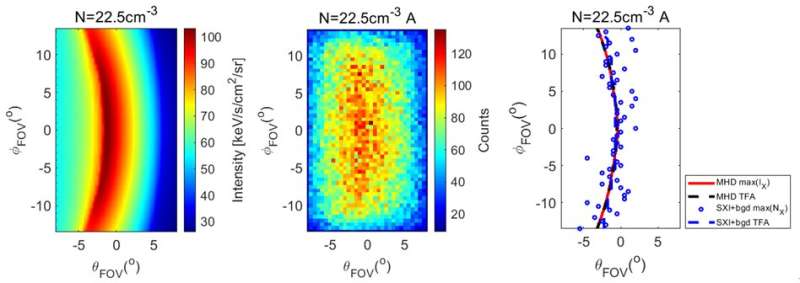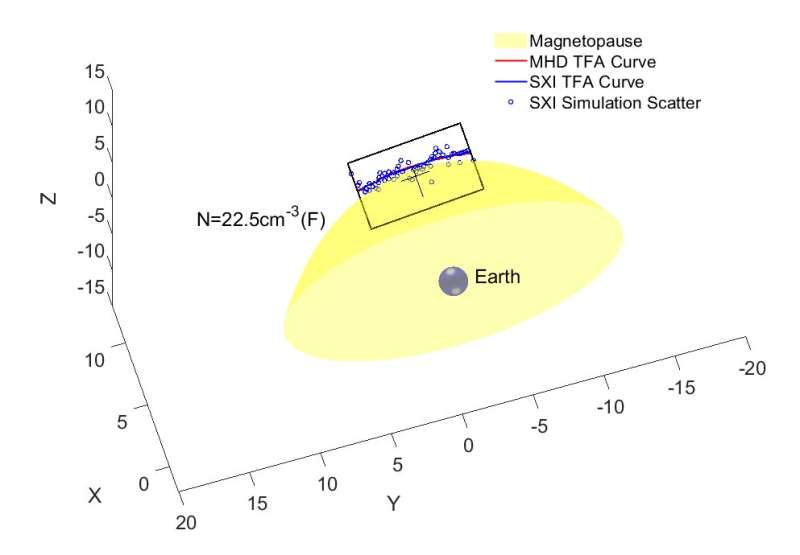Deriving the magnetopause position from wide field-of-view soft X-ray imager simulation

Imaging techniques provide essential information in astronomical and space physics studies. The soft X-ray imager (SXI) will obtain images of the Earth's magnetosphere from solar wind charge exchange emission in a global view. However, it is a challenge to reconstruct its 3D structures from the observed 2D image(s). Solar wind Magnetosphere Ionosphere Link Explorer (SMILE) will have a soft X-ray imager (SXI) onboard, which is a powerful tool to study the geo-space environment under various solar wind conditions.
SMILE will be launched around the year 2024 and operate in a highly inclined elliptical orbit. This orbit is ~20 RE at apogee and will allow SMILE to make clear and quasi-continuous observations of key regions in near-Earth space with remote sensing instrument. As one of the four payloads, SXI will provide macro-scale magnetopause images near subsolar region (field of view is 16°×27°).
So far, several approaches had been developed to reconstruct the 3D magnetopause from such 2D images. Each method has its own applicable situation. Recently, Sun et al. (2020) proposed the Tangent Fitting Approach (TFA). It enables the reconstruction of the 3D magnetopause from a single X-ray image by finding the optimum match of the tangent directions. We apply TFA to SXI photon count images by using instrument simulation, considering the effects of instrument and X-ray background noises. It validates the capability of TFA to reconstruct magnetopause under different solar wind conditions and various viewing geometries.

Researchers validated the efficiency of TFA to reconstruct the 3D magnetopause, especially the subsolar magnetopause position, in some typical solar wind conditions and vantage viewing geometries by using SXI simulation data. Based on the SXI simulation of the X-ray photon images, the series scatter diagram of max photon counts for each line in SXI simulation result can be used to reconstruct the position of magnetopause.
The research was published in Science China Earth Sciences.
More information: Guo Y et al, Deriving the magnetopause position from wide field-of-view soft X-ray imager simulation, Science China Earth Sciences (2022). DOI: 10.1007/s11430-021-9937-y
Journal information: Science China Earth Sciences
Provided by Science China Press





















